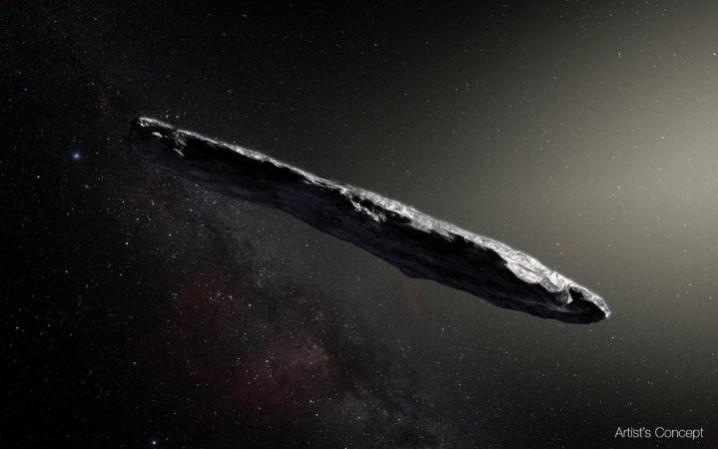
A few days back, a team of Harvard scientists had suggested that interstellar visitor Oumuamua could be a space sail sent by advanced aliens to look for life in the solar system. As the report from Harvard scientists reignited various theories surrounding the existence of alien life, Ancient Aliens producer and star Giorgio Tsoukalos has now pointed out that interstellar body Oumuamua could be an asteroid and alien ship at the same time.
In a recent talk with Inverse, Tsoukalos argued that a machine type object is not necessary to travel through space, and a hollowed out asteroid can be also used to reach the deep nooks of the universe.
"Some scientists have proposed that in order to travel through space you don't need a machine-type object but you could use an asteroid and you hollow it out. And so from the outside, it looks like a normal object but inside you may have the technology and a crew or it just sends back data. Who knows?" said the Ancient Aliens producer.
As per Tsoukalos, a boost in speed attained by Oumuamua could be the main proof behind its artificial origin. He argues that a natural asteroid without any external interference could not gain such an acceleration.
"Personally, I do not yet have a formed opinion. I would prefer the space probe idea. Oumuamua changed trajectory and it increased and decreased speed. So that's why I'm leaning towards the space probe idea," added Tsoukalos.
However, Don Lincoln, a senior scientist at the Fermi National Accelerator Laboratory, believes that the possibility of Oumuamua being an alien spaceship is possible but very unlikely. Don Lincoln argues that a phenomenon called outgassing could be the result of the unexpected acceleration gained by Oumuamua during its course.
As per Lincoln, "there is a very pedestrian explanation for this non-gravitational behaviour: The object is "outgassing," which means various forms of ice are melting and puffing off into space. Basically, it's the same principle as a rocket ship. Near the sun, there would be lots of melting and lots of puffing. Further, from the sun, the melting would slow and that would result in less unexplained acceleration."














